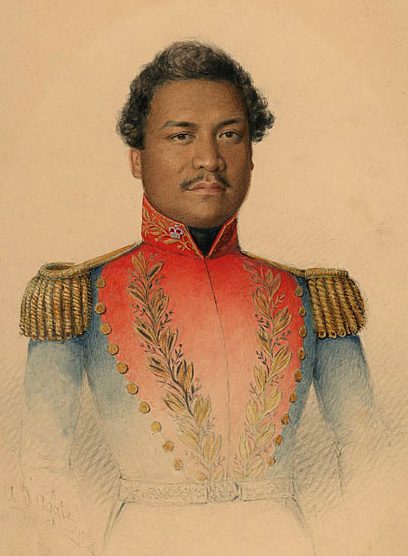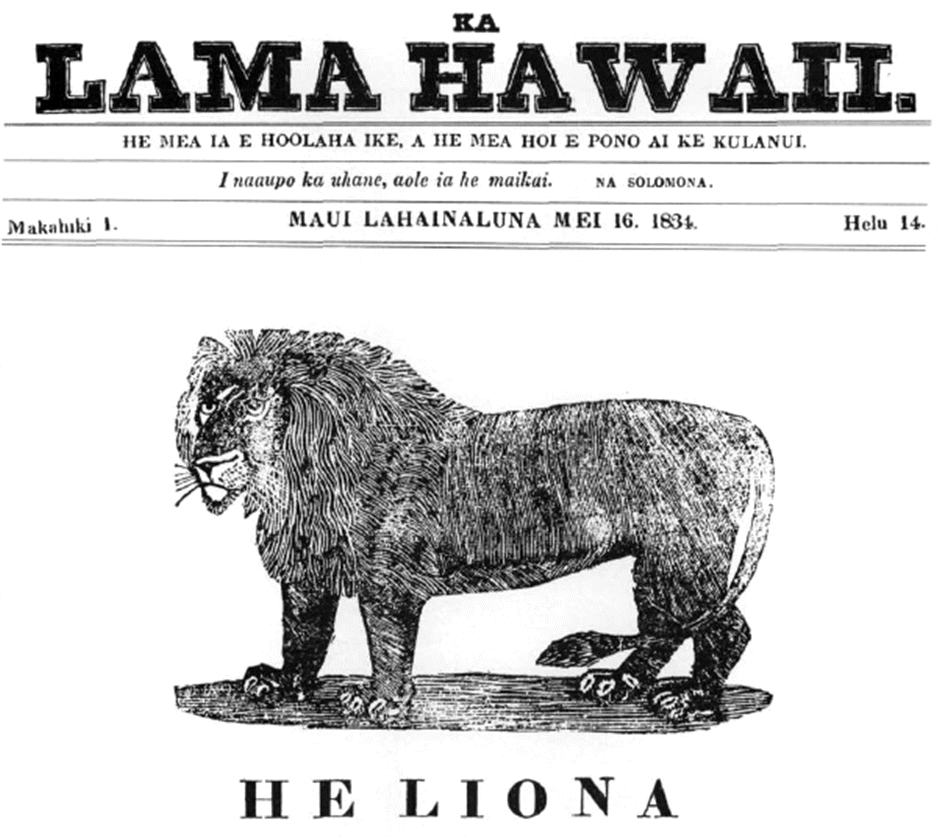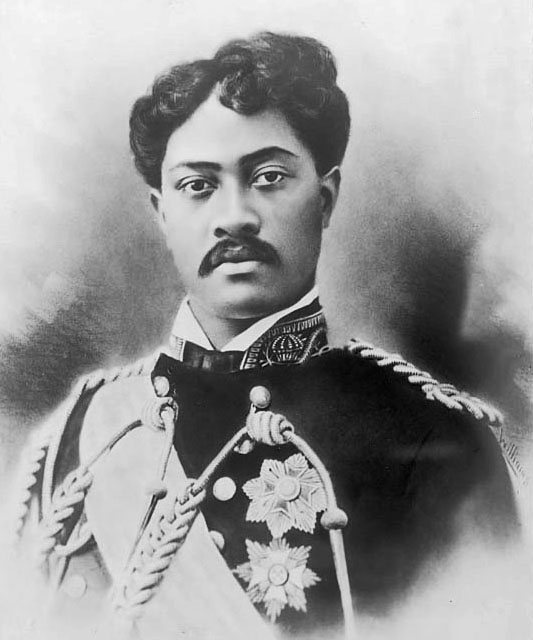|
Leleiohoku II
William Pitt Leleiohoku II, born Kalahoʻolewa (January 10, 1855 – April 9, 1877), was a prince of the Hawaiian Kingdom and member of the reigning House of Kalākaua. At birth, Leleiohoku was ''hānai'' (informally adopted) by Ruth Keʻelikōlani and later legally adopted by her in 1862 as the heir to her vast land holdings. He was educated at St. Alban's College, a precursor of the present ʻIolani School. After finishing his education, he worked in the governmental Foreign Office and served as an officer on the personal military staff of King Lunalilo. On February 14, 1874, his brother Kalākaua was elected king after the death of Lunalilo. Declared heir apparent to his childless brother, Leleiohoku was expected to inherit the throne of Hawaii. He also served as a Privy Councilor and member of the House of Nobles in the Legislature of the Kingdom of Hawaii. During Kalākaua's trip to the United States to negotiate the Reciprocity Treaty of 1875, Leleiohoku ruled as rege ... [...More Info...] [...Related Items...] OR: [Wikipedia] [Google] [Baidu] |
Kingdom Of Hawaii
The Hawaiian Kingdom, also known as the Kingdom of Hawaiʻi (Hawaiian language, Hawaiian: [kɛ ɐwˈpuni həˈvɐjʔi]), was an Archipelagic state, archipelagic country from 1795 to 1893, which eventually encompassed all of the inhabited Hawaiian Islands. It was established in 1795 when Kamehameha I, then Aliʻi nui of Hawaii, conquered the islands of Oʻahu, Maui, Molokaʻi, and Lānaʻi, and unified them under one government. In 1810, the Hawaiian Islands were fully unified when the islands of Kauaʻi and Niʻihau voluntarily joined the Hawaiian Kingdom. Two major Dynasty, dynastic families ruled the kingdom, the House of Kamehameha and the House of Kalākaua. The kingdom subsequently gained diplomatic recognition from European powers and the United States. An influx of European and American explorers, traders, and whalers soon began arriving to the kingdom, introducing diseases such as syphilis, tuberculosis, smallpox, and measles, leading to the rapid decline of the Native H ... [...More Info...] [...Related Items...] OR: [Wikipedia] [Google] [Baidu] |
Lunalilo
Lunalilo (William Charles Lunalilo; January 31, 1835 – February 3, 1874) was the sixth monarch of the Kingdom of Hawaii from his election on January 8, 1873, until his death a year later. Born to Kekāuluohi and High Chief Charles Kanaʻina, he was of royal descent and a grandnephew of King Kamehameha I. He was educated at the Royal School by American missionaries and was proclaimed eligible for the throne by King Kamehameha III. After the death of King Kamehameha V, he was elected to the throne in 1873 by a unanimous decision of the legislature of the kingdom. Due to his popularity and status as Hawaii's first elected monarch, he became known as "The People's King". He died a year later from tuberculosis. Early life William Charles Lunalilo was born on January 31, 1835, in a two-story house made of coral brick, an area known as '' Pohukaina'', now part the grounds of the ʻIolani Palace in Honolulu. His mother was High Chiefess Miriam Auhea Kekāuluohi (later styled ... [...More Info...] [...Related Items...] OR: [Wikipedia] [Google] [Baidu] |
Kamehameha IV
Kamehameha IV (Alekanetero ʻIolani Kalanikualiholiho Maka o ʻIouli Kūnuiākea o Kūkāʻilimoku; Anglicisation, anglicized as Alexander Liholiho) (February 9, 1834 – November 30, 1863), reigned as the List of Hawaiian monarchs, fourth monarch of Hawaii under the title ''Ke Aliʻi o ko Hawaiʻi Pae ʻAina'' of the Hawaiian Kingdom, Kingdom of Hawaii from January 11, 1855, to November 30, 1863. Early life Alexander was born on February 9, 1834, in Honolulu on the island of Oahu, Oʻahu. His father was Kekūanaōʻa, High Chief Mataio Kekūanaōʻa, Royal Governor of Oʻahu. His mother was Kīnaʻu, Princess Elizabeth Kīnaʻu the ''Kuhina Nui'' or Prime Minister of the Kingdom. He was the grandson of Kamehameha I, first monarch of all the islands. Alexander had three older brothers, David Kamehameha, Moses Kekūāiwa and Lot Kapuāiwa, and a younger sister, Victoria Kamāmalu. As a toddler, Alexander was adopted by his uncle, King Kamehameha III who decreed Alexander heir to ... [...More Info...] [...Related Items...] OR: [Wikipedia] [Google] [Baidu] |
Kamehameha III
Kamehameha III (born Kauikeaouli) (March 17, 1814 – December 15, 1854) was the third king of the Kingdom of Hawaii from 1825 to 1854. His full Hawaiian name was Keaweaweula Kīwalaō Kauikeaouli Kaleiopapa and then lengthened to Keaweaweula Kīwalaō Kauikeaouli Kaleiopapa Kalani Waiakua Kalanikau Iokikilo Kīwalaō i ke kapu Kamehameha when he ascended the throne. Under his reign, Hawaii evolved from an absolute monarchy to a constitutional monarchy with the signing of both the 1840 Constitution, which was the first Hawaiian Language Constitution, and the 1852 Constitution. He was the longest reigning monarch in the history of the Kingdom, ruling for 29 years and 192 days, although in the early part of his reign he was under a regency by Queen Kaahumanu and later by Kaahumanu II. His goal was the careful balancing of modernization by adopting Western ways while keeping his nation intact. Early life Kauikeaouli was born at Keauhou Bay, on Hawaii island, the largest ... [...More Info...] [...Related Items...] OR: [Wikipedia] [Google] [Baidu] |
Hawaiian Language
Hawaiian (', ) is a critically endangered Polynesian language of the Austronesian language family, originating in and native to the Hawaiian Islands. It is the native language of the Hawaiian people. Hawaiian, along with English, is an official language of the U.S. state of Hawaii. King Kamehameha III established the first Hawaiian-language constitution in 1839 and 1840. In 1896, the Republic of Hawaii passed Act 57, an English-only law which subsequently banned Hawaiian language as the medium of instruction in publicly funded schools and promoted strict physical punishment for children caught speaking the Hawaiian language in schools. The Hawaiian language was not again allowed to be used as a medium of instruction in Hawaii's public schools until 1987, a span of 91 years. The number of native speakers of Hawaiian gradually decreased during the period from the 1830s to the 1950s. English essentially displaced Hawaiian on six of seven inhabited islands. In 2001, native ... [...More Info...] [...Related Items...] OR: [Wikipedia] [Google] [Baidu] |
Kapaʻakea
Caesar Kaluaiku Kamakaʻehukai Kahana Keola Kapaʻakea (1815 – November 13, 1866) was a Hawaiian chief who was the patriarch of the House of Kalākaua that ruled the Kingdom of Hawaii from 1874 to 1893. The name Kapaʻakea translates as "the coral or limestone surface" in Hawaiian. Biography Kapaʻakea was born in Kuiaha, Maui, about 1815. His Christian name was spelled several different ways, such as "Ceaser" in the state archives, or "Kaisera" in the style of the Hawaiian language. His father was High Chief Kamanawa II and mother was High Chiefess Kamokuiki. He was a great-grandson of one of the five Kona chiefs who supported Kamehameha I in his uprising against Kīwalaʻō, Kame'eiamoku, one of the royal twins on the coat of arms of Hawaii. His family was relatively of high rank and reputation until it was tarnished in 1840 when his father murdered his mother and was consequently executed. In the Great Mahele of 1848, he received few lands parceled out to the ''aliʻi ... [...More Info...] [...Related Items...] OR: [Wikipedia] [Google] [Baidu] |
Keohokālole
Analea Keohokālole (c. 1816–1869) was a Hawaiian chiefess and matriarch of the House of Kalākaua that ruled the Kingdom of Hawaiʻi from 1874 to 1893. Her Hawaiian name Keohokālole means "the straight hair of her own father's tresses" and was given to her at birth by Queen Kaʻahumanu. Life Keohokālole was born at Kailua-Kona, Hawaii in about 1816. She was daughter of the High Chiefess Kamaeokalani and the High Chief ʻAikanaka. Through her father she was descended from Kame'eiamoku and Keawe-a-Heulu two of the four Kona chiefs that supported Kamehameha I. In 1833 she married Caesar Kapaʻakea, a chief of lesser rank and her first cousin. Their union produced more than ten children. They were among the few Hawaiian chiefs to have such a large family. Many nobles of their time died very young and issueless. Their children were: James, David, Lydia, Anna, Kaʻiminaʻauao, Miriam, and Leleiohoku. She inherited vast tracts of land from her paternal grandmother Keoh ... [...More Info...] [...Related Items...] OR: [Wikipedia] [Google] [Baidu] |
Young Leleiohoku (PP-98-8-016)
Young may refer to: * Offspring, the product of reproduction of a new organism produced by one or more parents * Youth, the time of life when one's age is low, often meaning the time between childhood and adulthood Music * The Young, an American rock band * ''Young'', an EP by Charlotte Lawrence, 2018 Songs * "Young" (Baekhyun and Loco song), 2018 * "Young" (The Chainsmokers song), 2017 * "Young" (Hollywood Undead song), 2009 * "Young" (Kenny Chesney song), 2002 * "Young" (Place on Earth song), 2018 * "Young" (Tulisa song), 2012 * "Young", by Ella Henderson, 2019 * "Young", by Lil Wayne from ''Dedication 6'', 2017 * "Young", by Nickel Creek from ''This Side'', 2002 * "Young", by Sam Smith from ''Love Goes'', 2020 * "Young", by Silkworm from '' Italian Platinum'', 2002 * "Young", by Vacations (band), 2016 * "Young", by Vallis Alps, 2015 * "Young", by Pixey, 2016 People Surname * Young (surname) Given name * Young (Korean name), Korean unisex given name and name element ... [...More Info...] [...Related Items...] OR: [Wikipedia] [Google] [Baidu] |
Hawaiian War Chant
"Hawaiian War Chant" is an American popular song whose original melody and lyrics were written in the 1860s by Prince Leleiohoku. The original title of the song was '' Kāua I Ka Huahuaʻi'' or "We Two in the Spray." It was not written as a chant, and the Hawaiian lyrics describe a clandestine meeting between two lovers, not a battle. The English title therefore has nothing to do with the song as it was originally written and performed in Hawaii. History Under the original title, the song was recorded around June 1911 by the Crowel Glee Club, and released by Columbia Records. English lyrics by Ralph Freed were written in 1936 and the melody changed somewhat at that time by Johnny Noble. Tommy Dorsey recorded it on November 29, 1938, and it was released on Victor Records in the United States and Canada. In a 1942 performance, Dorsey's band featured drummer Buddy Rich and trumpeter Ziggy Elman for this song. The song was featured in the 1942 film '' Ship Ahoy'' starring Elean ... [...More Info...] [...Related Items...] OR: [Wikipedia] [Google] [Baidu] |
Na Lani ʻEhā
Na Lani ʻEhā, translated as The Four Royals or The Heavenly Four, refers to the siblings King Kalākaua (1836–1891), Queen Liliʻuokalani (1838–1917), Princess Likelike (1851–1887) and Prince William Pitt Leleiohoku II (1854–1877). All four were composers, known for their patronage and enrichment of Hawaii's musical culture and history. All four of them organized glee clubs. William Pitt Leleiohoku II, the youngest brother who died at age 22, was a guitar master and leader of the Kawaihau Glee Club. Youngest sister Likelike was a musician and a co-founder of the Kaohuokalani Singing Club. Queen Liliʻuokalani and King Kalākaua were the eldest siblings and had the most profound impact on Hawaii's culture. Both mentored numerous individuals, some of whom went on to musical careers in their own rights. Kalākaua did the most to revive Hawaiian culture when as monarch he showcased native Hawaiian music and traditional hula at his coronation and birthday jubilee celebratio ... [...More Info...] [...Related Items...] OR: [Wikipedia] [Google] [Baidu] |
Hawaiian Music Hall Of Fame
The Hawaiian Music Hall of Fame is an organization dedicated to recognizing the cultural importance of the music of Hawaii and hula. Established in 1994, the Hawaiian Music Hall of Fame promotes the appreciation and preservation of Hawaiian culture through educational programs and annual inductions honoring significant individuals, groups, institutions, chanters and songs. The Royal Patrons King David Kalakaua, Queen Liliuokalani, Princess Miriam Likelike and Prince William Pitt Leleiohoku II were siblings known as Na Lani ʻEhā, or The Royal Four, for their patronage and enrichment of Hawaii's musical culture and history. All four were composers. Their aggregate body of musical compositions in the Hawaiian language numbers in the hundreds. After the hula had long been banned by missionaries, Kalakaua restored it as a symbol of the Hawaiian culture. Kalakaua and Liliuokalani were the last monarchs of the Kingdom of Hawaii, but The Royal Four's legacy of music to Hawaii lives on ... [...More Info...] [...Related Items...] OR: [Wikipedia] [Google] [Baidu] |
Liliʻuokalani
Queen Liliʻuokalani (; Lydia Liliʻu Loloku Walania Kamakaʻeha; September 2, 1838 – November 11, 1917) was the only queen regnant and the last sovereign monarch of the Hawaiian Kingdom, ruling from January 29, 1891, until the overthrow of the Hawaiian Kingdom on January 17, 1893. The composer of "Aloha ʻOe" and numerous other works, she wrote her autobiography ''Hawaii's Story by Hawaii's Queen, Hawaiʻi's Story by Hawaiʻi's Queen'' (1898) during her imprisonment following the overthrow. Queen Liliʻuokalani was born in 1838 in Honolulu, on the island of Oahu, Oʻahu. While her natural parents were Keohokālole, Analea Keohokālole and Kapaʻakea, Caesar Kapaʻakea, she was ''hānai'' (informally adopted) at birth by Pākī, Abner Pākī and Laura Kōnia and raised with their daughter Bernice Pauahi Bishop. Baptized as a Christian and educated at the Royal School (Hawaii), Royal School, she and her siblings and cousins were proclaimed eligible for the throne by King Kameham ... [...More Info...] [...Related Items...] OR: [Wikipedia] [Google] [Baidu] |







